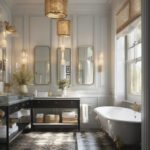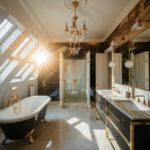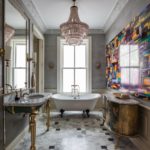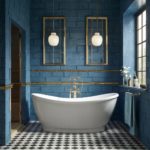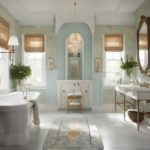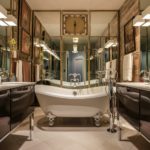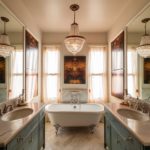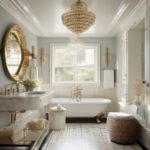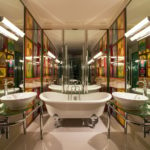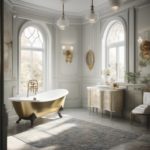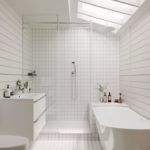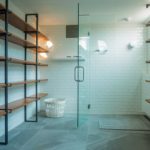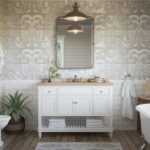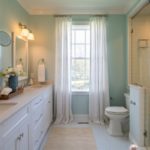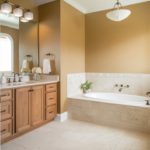Home »
Decorations »
Mastering Modern Antique Bathrooms: Timeless Elegance with Contemporary Comfort
Mastering Modern Antique Bathrooms: Timeless Elegance with Contemporary Comfort

The modern antique bathroom is a captivating blend of the old and new, creating a unique and stylish space that pays homage to historical design while incorporating contemporary conveniences. This design style appeals to those who appreciate the charm of vintage aesthetics but do not want to sacrifice modern functionality. Let’s explore how this enchanting style can transform a mundane bathroom into a sanctuary of timeless elegance and modern luxury.
The journey of bathroom design has seen significant changes over the centuries. From the public bathhouses of ancient Rome to the opulent Victorian baths, each era brought unique elements that have influenced today’s designs.
Key Principles of Modern Antique Design
In modern antique bathrooms, the key principles revolve around harmonizing old-world charm with contemporary functionality. This design approach seeks to create spaces that feel timeless yet relevant in today’s homes.

- Balance of Old and New
Central to modern antique design is the delicate balance between traditional and modern elements. While antique aesthetics like vintage fixtures, ornate mirrors, and clawfoot tubs evoke nostalgia, they are often complemented by modern amenities such as sleek faucets, energy-efficient lighting, and smart technology integration. This fusion not only enhances usability but also ensures the bathroom meets the practical needs of modern living.
- Focus on Functionality and Aesthetics
Unlike purely antique spaces that may prioritize historical accuracy over usability, modern antique bathrooms emphasize both functionality and aesthetics. Each element, from the choice of materials to the layout of fixtures, is carefully selected to blend visual appeal with practicality. This approach allows homeowners to enjoy the charm of antique-inspired design without compromising on comfort or convenience.
Elements of Modern Antique Bathroom
- Color Schemes
Modern antique bathrooms often feature a muted color palette that exudes sophistication and timelessness. Shades like soft whites, subtle grays, warm beiges, and vintage-inspired pastels dominate the color scheme, creating a serene and welcoming ambiance. These colors not only complement antique elements but also allow them to stand out as focal points within the space.
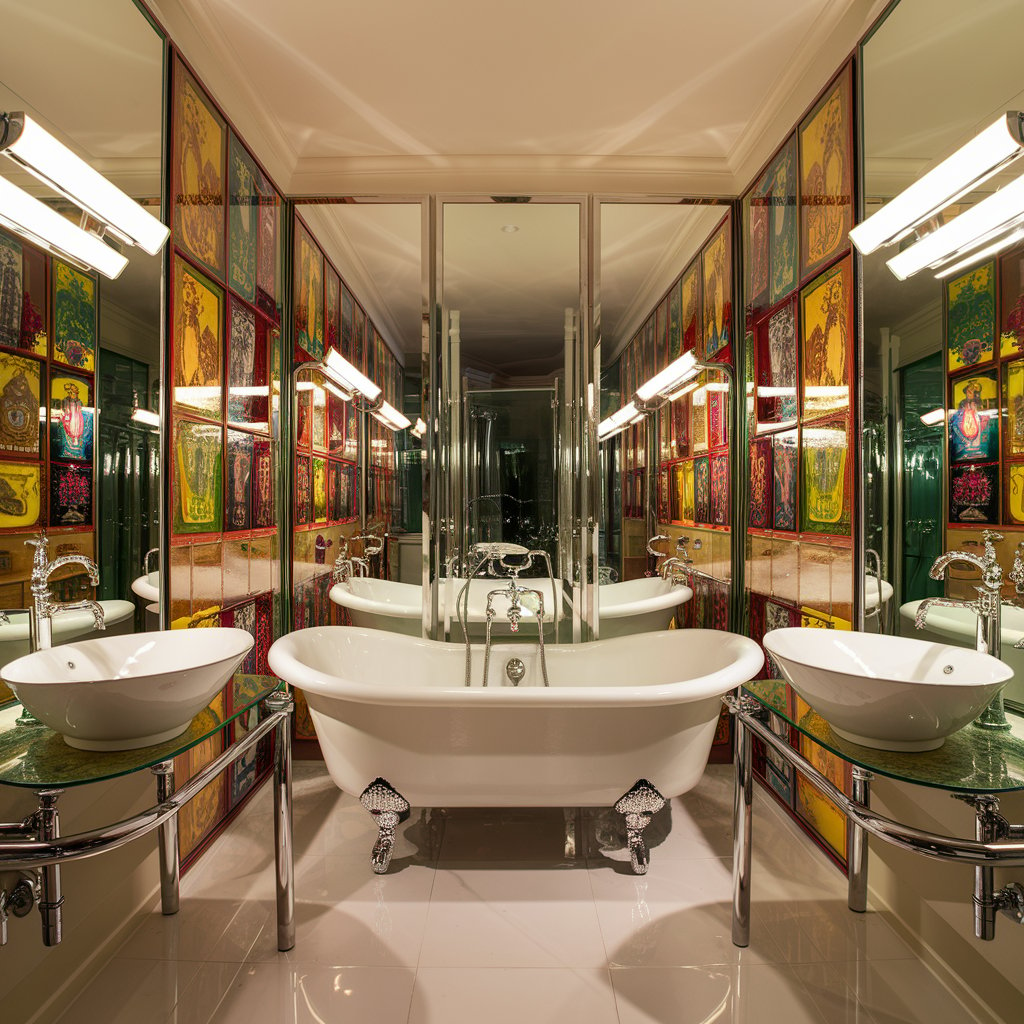
- Materials and Textures
Materials play a crucial role in defining the character of a modern antique bathroom. Common choices include natural stone such as marble or granite for countertops and floors, which add a touch of luxury and durability. Wood, particularly reclaimed or distressed varieties, is also popular for cabinetry and accents, lending warmth and authenticity to the design. Textures like aged metals, hammered finishes, and intricate tile patterns further enhance the tactile appeal of the space.
- Fixtures and Fittings
Fixtures and fittings in modern antique bathrooms strike a balance between vintage aesthetics and modern functionality. Antique-inspired faucets with cross handles or porcelain accents are paired with contemporary features like water-saving mechanisms or touchless technology. Freestanding tubs, often with clawfoot designs, serve as iconic pieces that anchor the room’s nostalgic charm, while modern shower systems offer convenience and luxury.
Furniture and Storage Solutions
- Vanities and Cabinets
Vanities and cabinets in modern antique bathrooms are crafted to mimic the look of antique furniture pieces. Solid wood vanities with intricate carvings, distressed finishes, or decorative hardware evoke a sense of old-world craftsmanship. These pieces not only provide ample storage but also contribute to the overall aesthetic appeal of the bathroom.

- Shelving and Storage Units
Incorporating open shelving or vintage-inspired storage units allows for both practical storage and display of decorative items. Wooden shelves with wrought iron brackets or glass-fronted cabinets showcase curated collections of antique glassware, artisanal soaps, or botanical accents, adding personal touches to the space.
Lighting in Modern Antique Bathrooms
- Types of Lighting
Lighting plays a pivotal role in highlighting the intricate details and enhancing the ambiance of modern antique bathrooms. Soft, ambient lighting is achieved through fixtures like chandeliers with crystal accents or pendant lights with frosted glass shades, echoing the elegance of bygone eras. Task lighting, such as wall sconces or vanity lights, ensures adequate illumination for grooming tasks while contributing to the overall atmospheric glow.
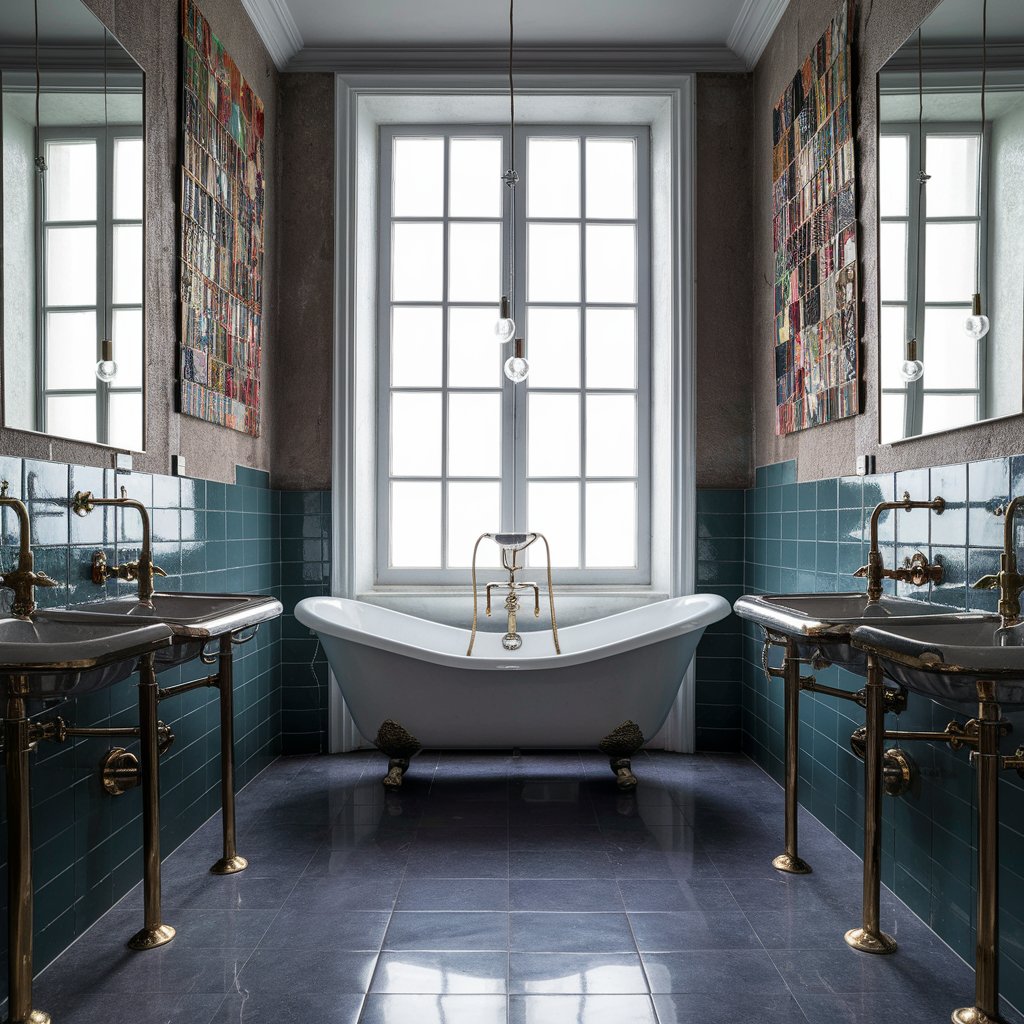
- Placement and Effects
Strategic placement of lighting fixtures can accentuate architectural features or highlight focal points within the bathroom. Placing a statement chandelier above a freestanding tub creates a dramatic centerpiece, while wall-mounted sconces on either side of a vanity mirror offer balanced illumination for daily routines. Dimmer switches or smart lighting controls allow for customizable lighting effects, adapting to different moods and occasions.
Flooring and Wall Treatments
- Tiles and Patterns
Flooring in modern antique bathrooms often features tiles with classic patterns such as hexagon, herringbone, or basketweave designs. Natural stone tiles like marble or travertine offer timeless elegance and durability, while patterned ceramic or porcelain tiles add visual interest and texture. Wall treatments may include subway tiles, beadboard paneling, or wallpaper with vintage-inspired motifs, creating a backdrop that enhances the room’s nostalgic charm.
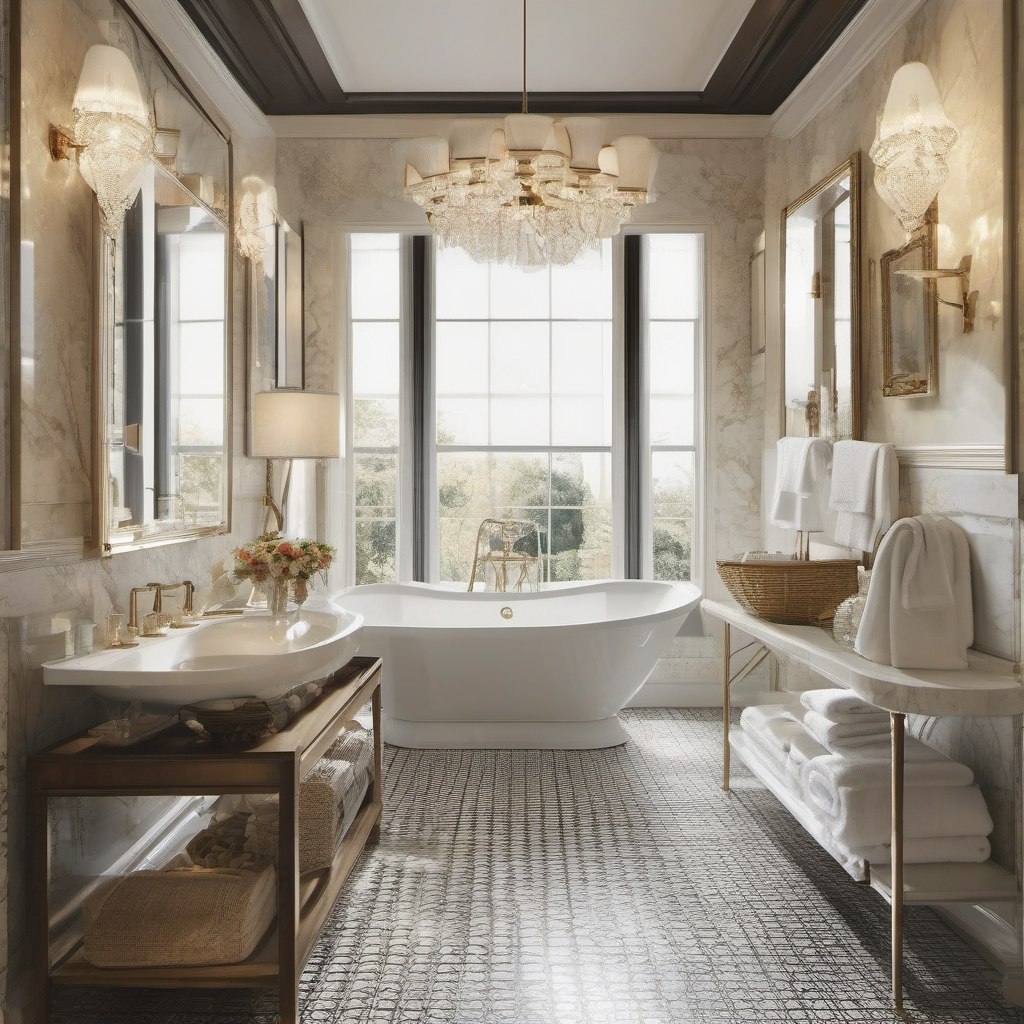
- Paints and Wallpapers
Soft, muted paint colors such as creamy whites, pale grays, or soft blues complement the overall color scheme of modern antique bathrooms. Wallpaper with intricate patterns like damask, toile, or botanical prints adds depth and character to walls, evoking a sense of old-world charm. Textured wallpaper with faux finishes such as linen or silk further enhances the tactile experience, creating a cozy and inviting atmosphere.
Bathtubs and Showers
- Clawfoot and Freestanding Tubs
Clawfoot and freestanding tubs are iconic features in modern antique bathrooms, symbolizing luxury and elegance. These tubs are often made from materials like cast iron or acrylic, with classic shapes and ornate details that harken back to Victorian or Edwardian eras. Clawfoot tubs with polished chrome or antique brass fixtures serve as focal points, inviting relaxation and indulgence in a tranquil setting.

- Modern Shower Solutions
While freestanding tubs take center stage in modern antique bathrooms, showers are equipped with modern conveniences and luxurious features. Frameless glass enclosures with rainfall showerheads or handheld sprays offer a spa-like experience, combining functionality with aesthetic appeal. Incorporating mosaic tiles or subway tiles in the shower area adds visual interest and complements the overall design theme.
Sinks and Faucets
- Vintage-Inspired Sinks
Sinks in modern antique bathrooms echo the elegance of bygone eras with vintage-inspired designs. Pedestal sinks with intricate porcelain basins or console sinks with marble countertops exude timeless sophistication. Undermount sinks made from materials like porcelain or hammered copper blend seamlessly with antique-inspired cabinetry, creating a cohesive and harmonious look.

- Modern Faucet Designs
Faucets in modern antique bathrooms strike a balance between vintage aesthetics and modern functionality. Cross-handled faucets with porcelain accents or bridge faucets with exposed pipes evoke a sense of nostalgia, while incorporating features like water-saving mechanisms or touchless technology ensures efficiency and convenience. Finishes such as polished chrome, brushed nickel, or antique brass complement the overall design scheme, adding a touch of refinement to the space.
Mirrors and Accessories
- Antique Mirrors
Mirrors play a dual role in modern antique bathrooms, serving both functional and decorative purposes. Antique mirrors with gilded frames, ornate carvings, or distressed finishes add a sense of grandeur and vintage charm. These mirrors not only reflect light and create a sense of space but also contribute to the room’s aesthetic by enhancing its historical allure.
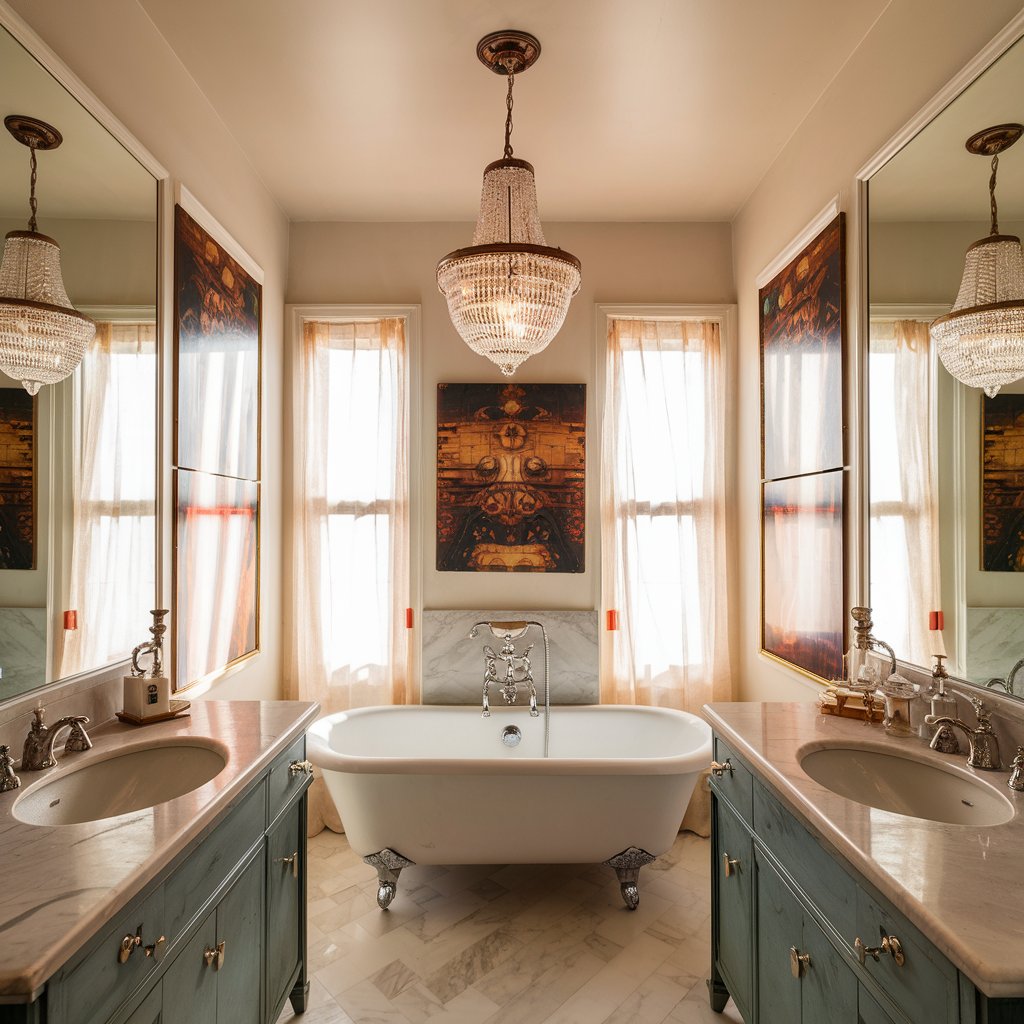
- Decorative Elements
Incorporating decorative elements such as vintage-inspired artwork, botanical prints, or antique collectibles adds personality and character to modern antique bathrooms. Items like apothecary jars, mercury glass vases, or porcelain figurines evoke a sense of nostalgia while showcasing curated collections that reflect the homeowner’s personal style. These accessories serve as finishing touches that elevate the overall ambiance and create a cohesive narrative within the space.
Textiles and Soft Furnishings
- Towels and Bath Mats
Textiles in modern antique bathrooms are chosen for their comfort, durability, and aesthetic appeal. Soft, plush towels in neutral tones or subtle patterns complement the color scheme while providing luxurious comfort. Bath mats with vintage-inspired designs or intricate patterns add texture and warmth to cold tile floors, enhancing both the visual and tactile experience within the bathroom.
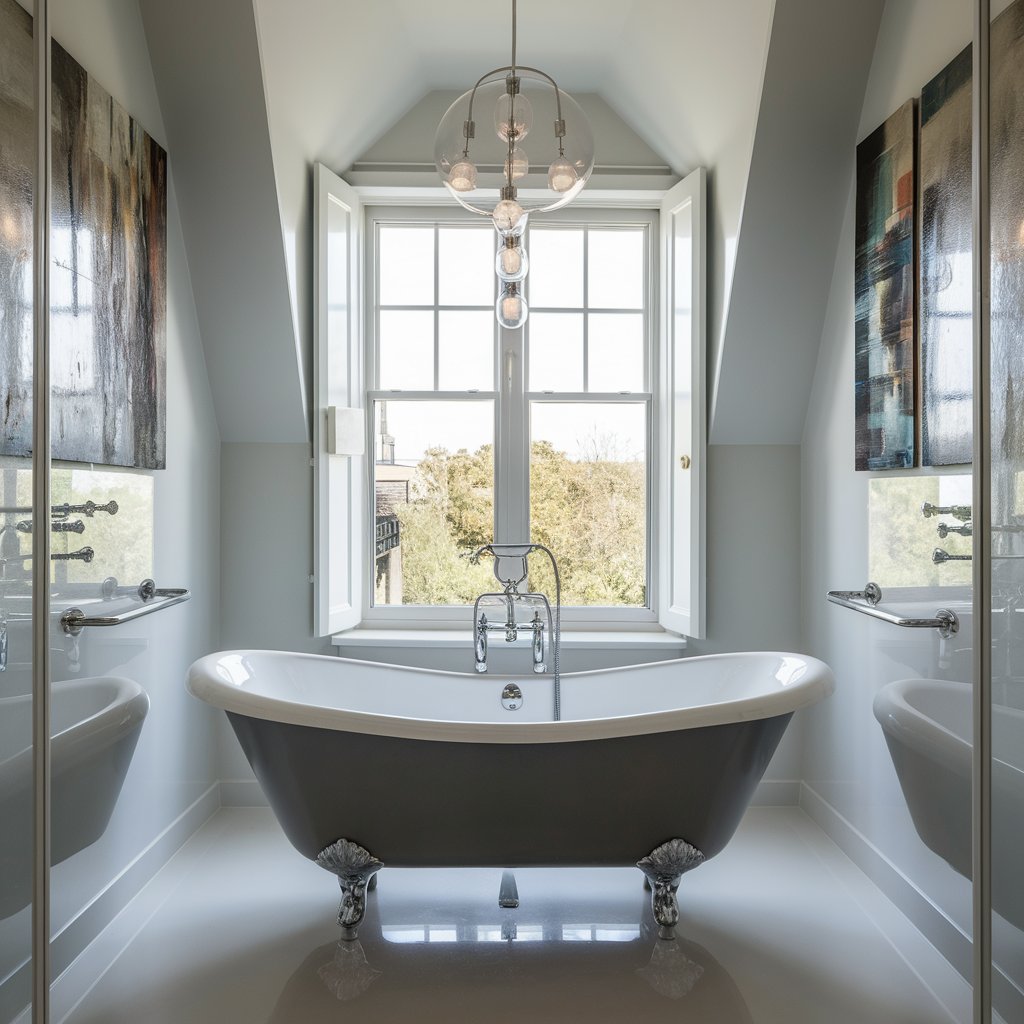
- Curtains and Blinds
Window treatments in modern antique bathrooms are selected to enhance privacy, control natural light, and complement the overall design theme. Fabric curtains with lace trim, embroidered details, or toile patterns evoke a sense of old-world charm and elegance. Alternatively, wooden blinds or shutters with adjustable slats offer a timeless appeal while allowing for customizable light filtration and privacy levels.
Incorporating Technology
- Smart Features
While modern antique bathrooms celebrate historical aesthetics, they also integrate smart technology to enhance convenience and efficiency. Smart mirrors with built-in LED lighting or touch-screen controls offer functionalities such as adjusting lighting settings, checking weather forecasts, or streaming music. Smart faucets with motion sensors or voice-activated controls provide hands-free operation, promoting hygiene and water conservation without compromising on style.
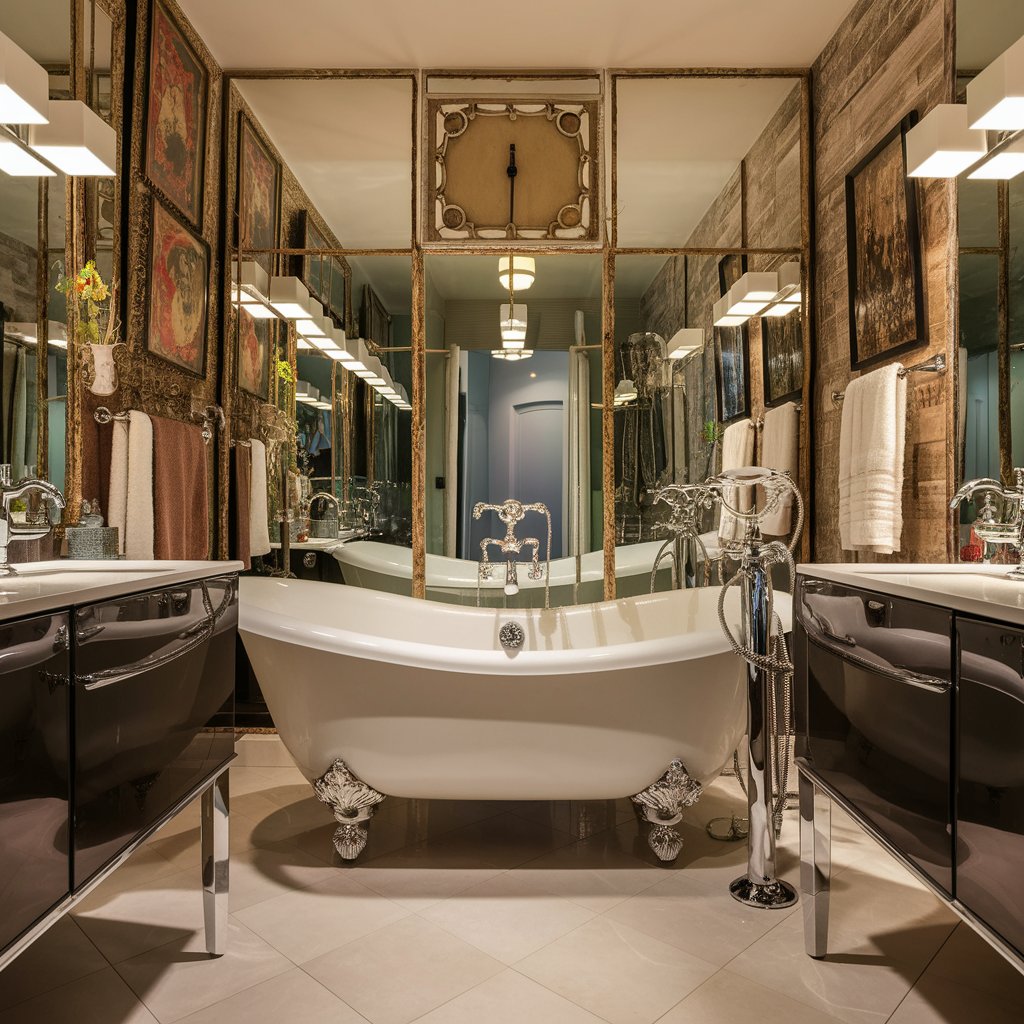
- Balancing Tech with Antique Aesthetics
Achieving a harmonious balance between technology and antique aesthetics is key in modern antique bathrooms. Concealing modern gadgets within vintage-inspired fixtures or integrating them seamlessly into the overall design ensures they enhance rather than detract from the room’s historical charm. Careful consideration of placement and design integration allows homeowners to enjoy the benefits of modern conveniences while preserving the authenticity and allure of antique-inspired spaces.
Sustainability in Modern Antique Bathrooms
- Eco-Friendly Materials
In response to growing environmental concerns, modern antique bathrooms prioritize sustainability through the use of eco-friendly materials and practices. Reclaimed wood for vanities or shelving, recycled glass tiles, and low-VOC paints contribute to a healthier indoor environment while reducing carbon footprints. Water-saving fixtures such as dual-flush toilets, aerated faucets, or rainwater harvesting systems promote water conservation without compromising on performance or aesthetic appeal.
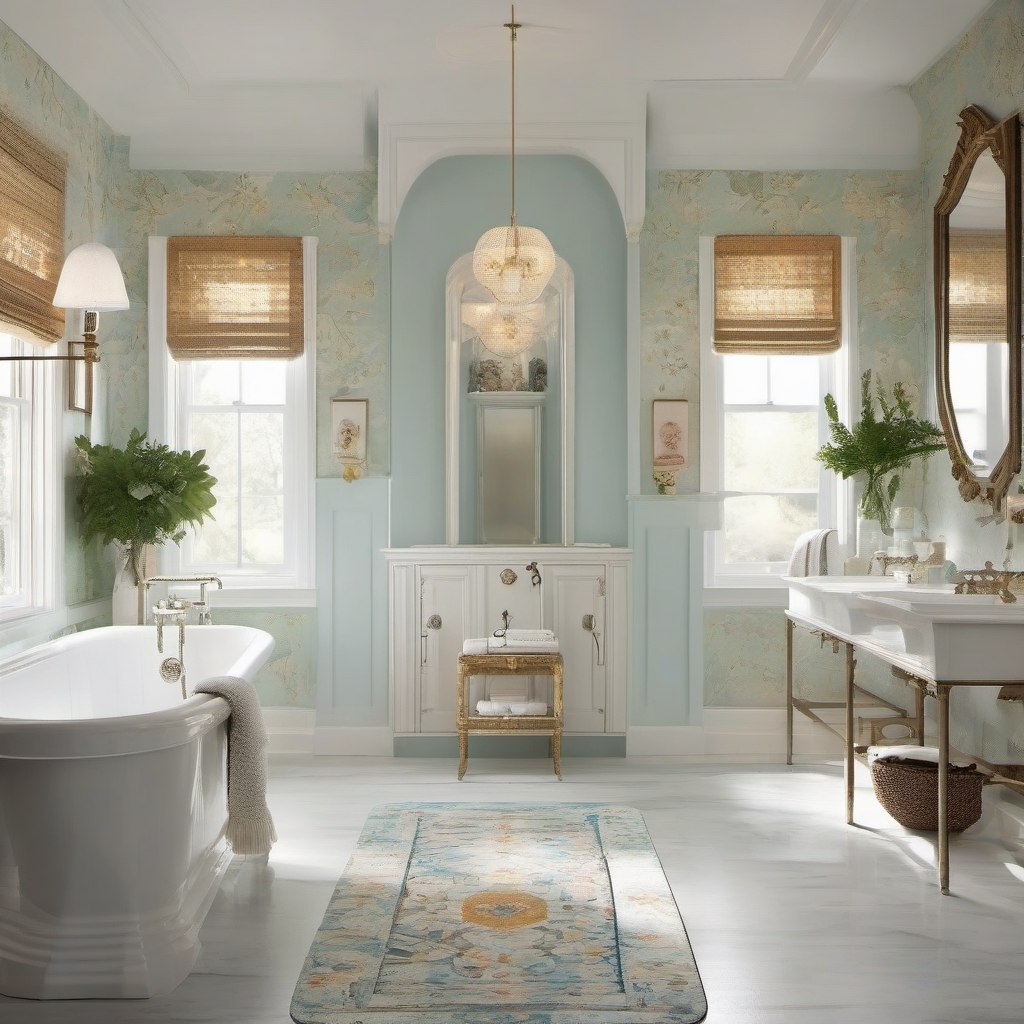
- Water-Saving Fixtures
Water-saving fixtures are integral to sustainable design in modern antique bathrooms. High-efficiency toilets with dual-flush mechanisms allow users to choose between full and partial flushes, reducing water consumption with each use. Aerated faucets maintain strong water pressure while minimizing flow rates, promoting water conservation without sacrificing comfort or functionality. Incorporating rainwater harvesting systems or greywater recycling technologies further enhances sustainability efforts, ensuring responsible water management within the home.
DIY Tips for Modern Antique Bathrooms
- Upcycling and Repurposing
DIY enthusiasts can embrace creativity by upcycling or repurposing existing items to achieve a modern antique aesthetic in their bathrooms. Old wooden crates can be transformed into rustic shelving units, while vintage mirrors or frames can be refreshed with new finishes or distressing techniques. Salvaged architectural elements such as reclaimed doors or window frames add character and authenticity to the space, showcasing unique design ingenuity and reducing waste.
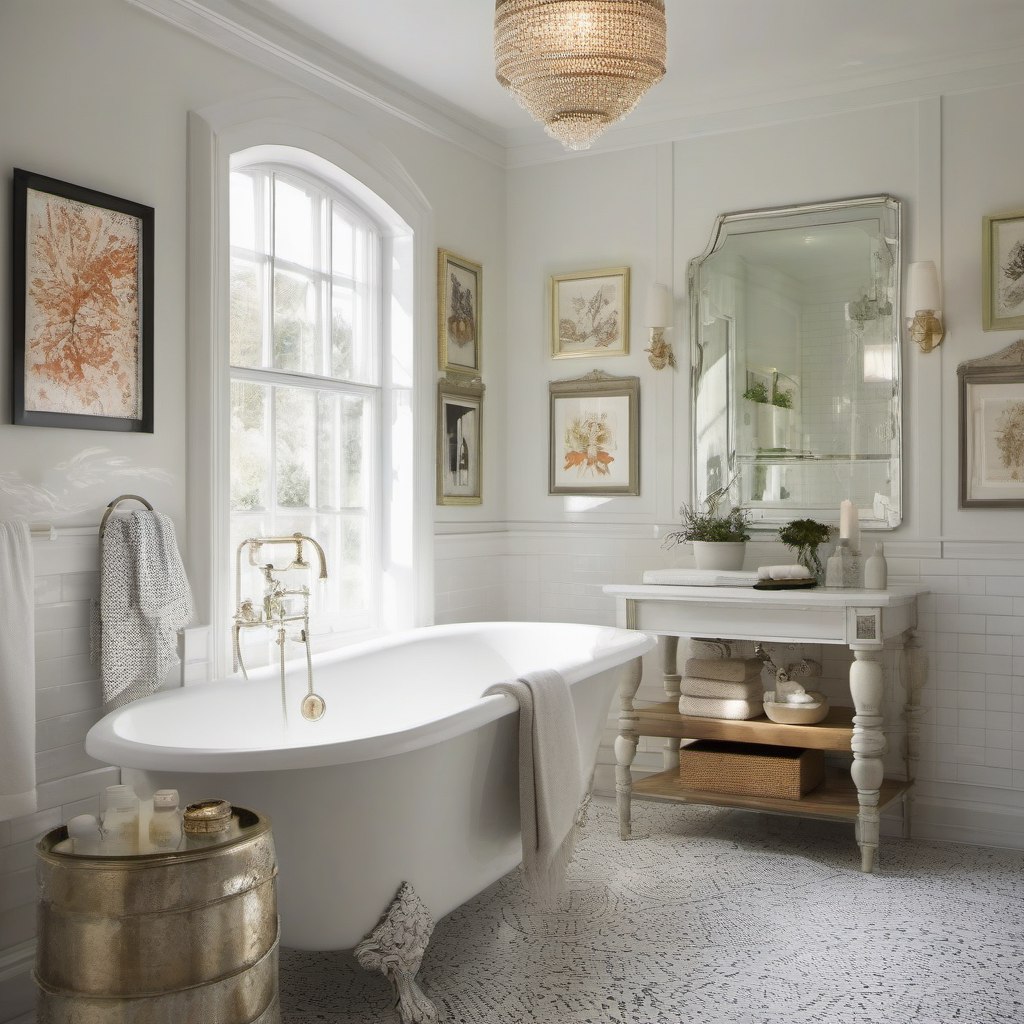
- Budget-Friendly Projects
Creating a modern antique bathroom doesn’t have to break the bank. Budget-conscious homeowners can achieve the desired look through strategic investments and DIY projects. Painting existing cabinetry with antique-inspired finishes or installing vintage-style hardware can instantly transform the appearance of the room without major renovations. Thrift store finds, such as antique light fixtures or decorative accessories, offer affordable alternatives to brand-new purchases, adding personality and charm to the space on a budget.
Case Studies
- Examples of Stunning Modern Antique Bathrooms
Examining real-life examples of modern antique bathrooms provides inspiration and insight into effective design principles and aesthetic choices. From luxurious master suites to charming guest bathrooms, each case study showcases unique interpretations of the modern antique style, highlighting successful integration of historical charm with contemporary comforts.

- Analysis of Design Choices
Analyzing design choices in modern antique bathrooms reveals how various elements contribute to the overall ambiance and functionality of the space. Case studies illustrate effective use of color schemes, materials, and architectural details to create cohesive and visually appealing environments that reflect the homeowner’s personal style and preferences.
Expert Insights
- Quotes from Interior Designers
Interior designers specializing in modern antique bathrooms offer valuable insights and advice on achieving a harmonious balance between vintage aesthetics and modern functionality. Their expertise sheds light on effective design strategies, common pitfalls to avoid, and innovative approaches to integrating antique-inspired elements with contemporary conveniences.
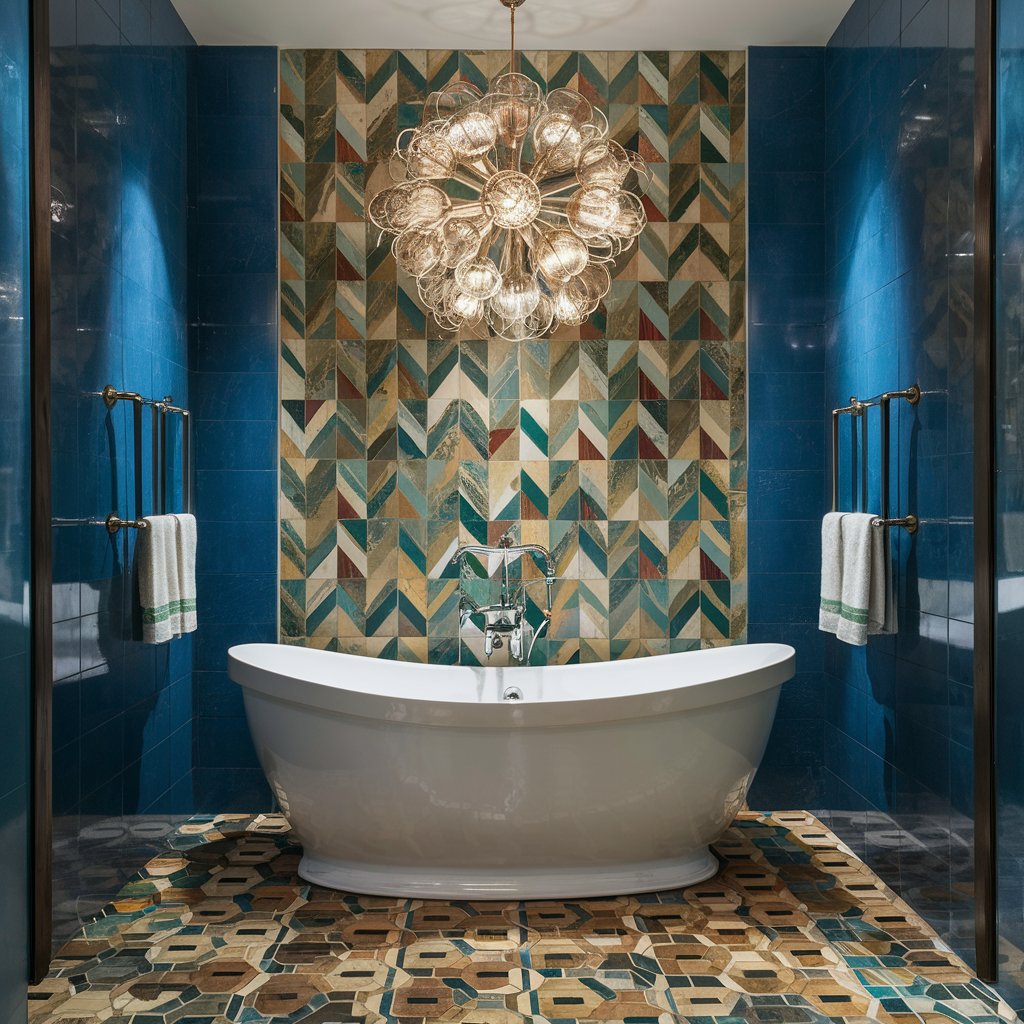
- Common Mistakes to Avoid
Learning from professionals helps homeowners navigate potential challenges and pitfalls associated with designing modern antique bathrooms. Expert advice emphasizes the importance of selecting cohesive color palettes, choosing durable materials, and balancing historical authenticity with practical usability. Avoiding over-cluttering or mixing incompatible styles ensures that the final design not only looks beautiful but also functions seamlessly for years to come.
Future Trends in Modern Antique Design
- Emerging Trends
The evolution of modern antique design continues to evolve with emerging trends that blend historical charm with modern innovation. Future trends may include enhanced integration of smart technology, sustainable design practices, and reinterpretation of traditional motifs through contemporary craftsmanship. Anticipating these developments allows homeowners and designers to stay ahead of the curve while preserving the timeless allure of antique-inspired interiors.

- Predictions for the Future
Predicting the future of modern antique design involves envisioning how societal shifts, technological advancements, and environmental considerations will influence design preferences. The rise of sustainable materials, customizable smart features, and global design influences may shape future interpretations of the modern antique style, offering new opportunities for creativity and personal expression in bathroom design.
In conclusion, the modern antique bathroom represents a harmonious blend of historical elegance and modern innovation, creating timeless spaces that cater to both aesthetic sensibilities and practical needs. By carefully balancing old-world charm with contemporary functionality, homeowners can transform their bathrooms into luxurious retreats that celebrate the beauty of the past while embracing the conveniences of the present. Whether through vintage-inspired fixtures, sustainable materials, or innovative technology, modern antique bathrooms offer endless possibilities for creating personalized sanctuaries that reflect individual style and enhance daily living experiences.
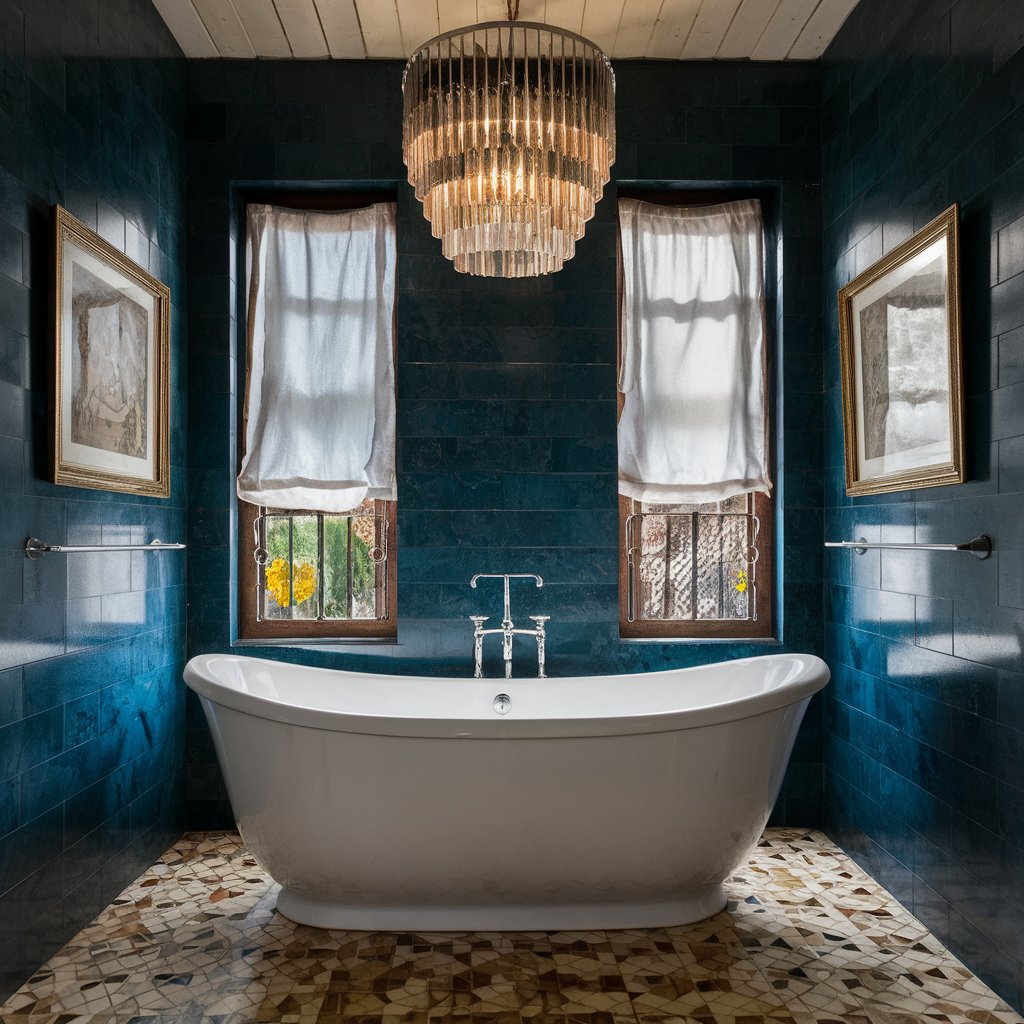
FAQs
- How to start designing a modern antique bathroom?
- Begin by researching historical design elements and identifying your preferred aesthetic.
- Create a mood board to visualize color schemes, materials, and furniture styles.
- Consult with a professional designer for expert guidance and recommendations.
- What are the best materials to use in a modern antique bathroom?
- Opt for natural materials like marble, wood, and metals for authenticity and durability.
- Consider eco-friendly options such as reclaimed wood and recycled glass tiles for sustainability.
- How to balance modern and antique elements in a bathroom design?
- Select antique-inspired fixtures and furnishings that complement modern amenities.
- Ensure cohesive design by harmonizing color palettes, textures, and architectural details.
- What are cost-effective ways to achieve a modern antique bathroom look?
- Explore DIY projects such as upcycling furniture, painting cabinetry, or installing vintage-style hardware.
- Shop at thrift stores or online marketplaces for affordable antique-inspired decor and accessories.
- How to maintain a modern antique bathroom?
- Regularly clean and polish vintage fixtures to maintain their shine and functionality.
- Monitor plumbing and electrical systems for any signs of wear or corrosion.
- Use mild cleaning products and avoid harsh chemicals to preserve finishes and materials.
